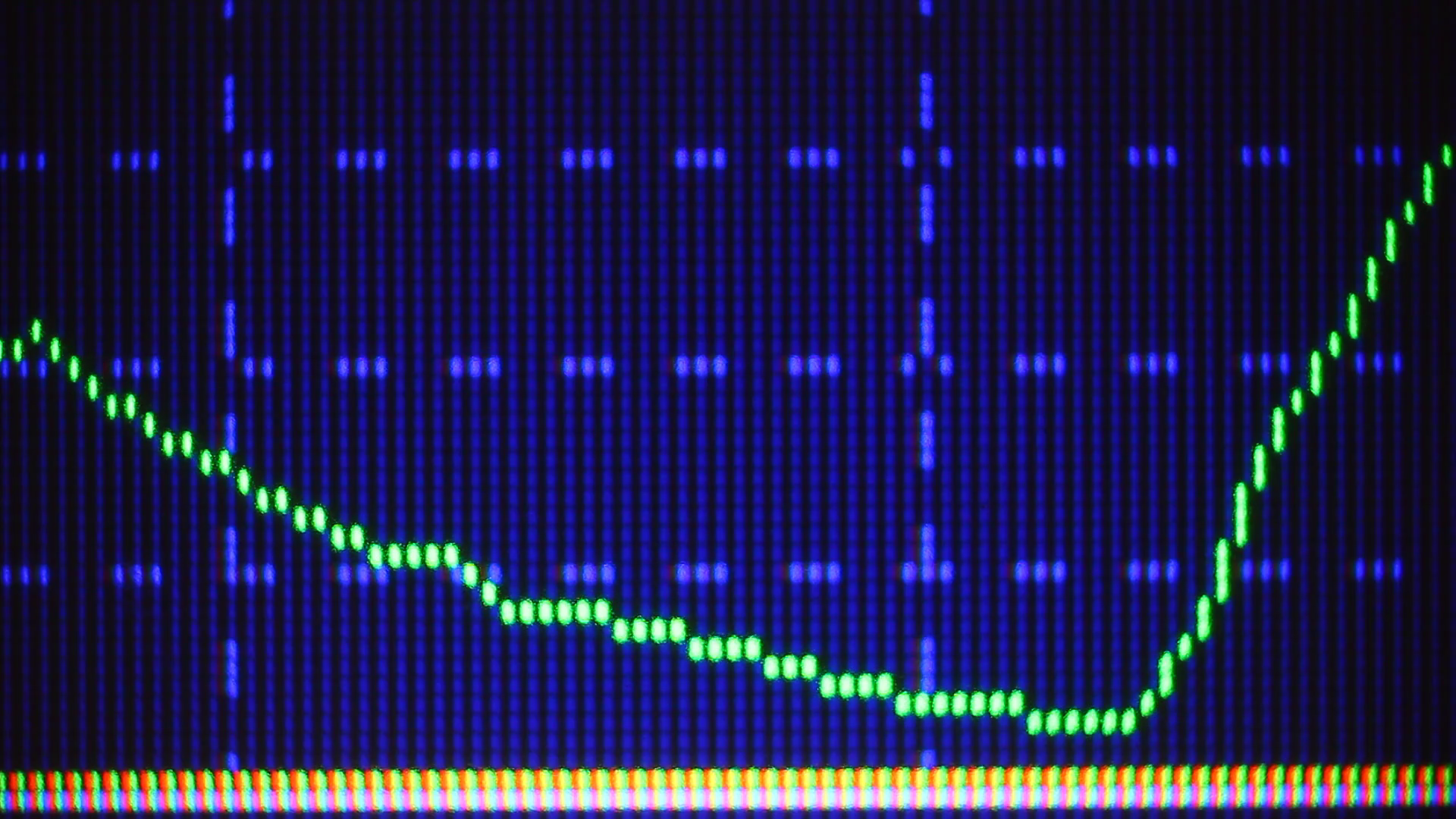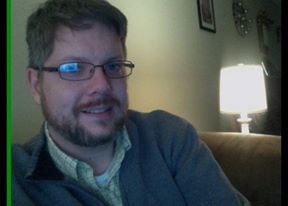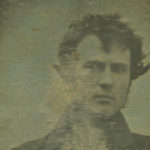The middle of the twentieth century abounded with writers who simultaneously analyzed their own times and predicted ours: Daniel Bell (The Coming of the Post-Industrial Society), Christopher Lasch (The Culture of Narcissism), and David Riesman (The Lonely Crowd) all come immediately to mind. To their ranks we should add the consummately grumpy cultural critic Dwight Macdonald, whose disgust with the middle-class banalities of the 1950s and 1960s can give us a language for expressing our own disgust and our own banalities.
Macdonald belonged to that nebulous group of journalists and critics called the New York Intellectuals, whose cultural criticism was published in mid-century left-wing journals like Partisan Review and Dissent. The New York Intellectuals occupy a strange place in American critical history. Almost all of them began their careers as Marxists of one stripe or another, but they were some of the most vigorous Western critics of Soviet Communism, and many of them adopted Trotskyism over and against the reigning Stalinism of the Eastern bloc. But because most of their careers stretched over a period in which liberalism turned radical, the culture shifted around them, and they can look quite conservative, even reactionary, to a post-1968 audience.
Lionel Trilling is a case in point. Probably the last literary critic who doubled as a major public intellectual, Trilling was probably the most important English professor in America for a period in the 1950s and early 1960s. But his fortunes have changed. In a 2008 article for the New Yorker, Louis Menand points out that Trilling saw the student protests at Columbia University as shallow and naïve and that he returned to his office after the occupations had ended to find expletives written on the wall—expletives that identified him as part of the bourgeois culture that the protests were meant to overthrow. Shockingly, the Norton Anthology of Theory and Criticism, the closest thing literary criticism has to a canon, includes no Trilling essays. The other New York Intellectuals have largely met with similar fates. Even those who did not, like Irving Kristol and Norman Podhoretz, openly become neoconservatives seem stodgy and old-fashioned in the 21st century. They’re too concerned with high culture, too contemptuous of popular and mass media, to be acceptable in the postmodern era, which has tended to blur and erase the lines between high and low culture.
Midcult takes the avant-garde and sells it for pennies on the dollar.
Macdonald, though, speaks to our time in a way that someone like Trilling—magisterial though his criticism may be—does not. His most famous essay is his 1960’s seventy-page manifesto Masscult and Midcult, in which, in his inimitably prickly fashion, he decries the mass culture (“or better Masscult, since it really isn’t culture at all” [3]) that had almost completely taken over the radio, television, and cinema of the era, pushing a more authentic and meaningful folk culture aside in favor of something entirely dependent upon market forces. Worse still, however, is what Macdonald calls “Midcult,” a “middlebrow compromise” that “has the essential qualities of Masscult—the formula, the built-in reaction, the lack of any standard except popularity—but . . . decently covers them with a cultural fig leaf” (32, 35). Midcult conceives of itself, perhaps, as a form of High Culture made more palatable for middle-class tastes. But in doing so, Macdonald argues, it has bastardized the thing, lowered it to the level of Masscult and destroyed its power to challenge and change the people who consume it. It takes the avant-garde and sells it for pennies on the dollar.
Masscult and Midcult is also, I must add, uproariously funny. He takes issue, for example, with the Revised Standard Version of the Bible, which “destroys our greatest monument of English prose, the King James Version, in order to make the text ‘clear and meaningful to people today,’ which is like taking apart Westminster Abbey to make Disneyland out of the fragments” (36). Even better is his description of a contemporary issue of Life magazine that featured nine color pages of Renoir paintings, followed by a picture of a horse on roller skates. The optimistic academic sees “phenomena like Life as inspiriting attempts at popular education—just think, nine pages of Renoir. But,” says Macdonald, “that roller-skating horse comes along, and the final impression is that both Renoir and the horse were talented” (12). These descriptions should make it clear the degree to which Macdonald’s outlook is simultaneously Trotskyist and conservative. One danger of Masscult and Midcult is that both of them are products of market forces—forces that carry the real potential to destroy the human soul. But another danger is that they eat away at the aesthetic and cultural traditions that very much sustain human flourishing. Macdonald is not a revolutionary, in other words. Like the best conservatives, he wants to protect the virtuous creations of the past so that they maintain their power to nourish and change us. How different from the cultural studies model of literary criticism that flourishes in contemporary universities, whereby texts are valued or discarded based on their conformity to standards of race, gender, and sexuality.
* * *
Masscult and Midcult is Macdonald’s masterpiece, but the world it describes is out of date, now that Masscult has largely collapsed into Midcult. Macdonald holds out hope at the end that High Culture might be saved by subscription television, and perhaps he is right. But what could be more Midcult than a nihilistic breast-delivery system like Game of Thrones, or more Masscult than a bloody action series like The Walking Dead? Meanwhile, the most famous “avant-garde” artist in America is probably the loathsome Jeff Koons, whose banal impersonations of Andy Warhol and Claes Oldenburg affirm popular tastes rather than challenging them. Masscult and Midcult is a great deal of fun to read, and it gives the history of how our culture got here, but it doesn’t really describe our era.
“The Triumph of Facts” is clearly a shot across the bow of scientism, the belief that the methods of the physical sciences—especially measurement—are the only valid methods to advance human knowledge.
Macdonald’s most prophetic piece was written a few years before Masscult and Midcult, and published in the long-forgotten journal Anchor Review. Though it does not use the term, “The Triumph of Facts” is clearly a shot across the bow of scientism, the belief that the methods of the physical sciences—especially measurement—are the only valid methods to advance human knowledge. But Macdonald is not terribly interested in the physical sciences themselves, and other than a few quick insults, he’s not even all that interested in the social sciences. Instead, he wants to know what scientism looks like in Masscult and Midcult:
Our mass culture—and a good deal of our high, or serious, culture as well—is dominated by an emphasis on data and a corresponding lack of interest in theory, by a frank admiration of the factual and an uneasy contempt for imagination, sensibility, and speculation. We are obsessed with technique, hagridden by Facts, in love with information. (203)
It hardly needs to be said that Macdonald’s words apply just as much—and probably even more—to our own cultural moment as to his. We have gone even further down the scientism rabbit hole than 1950s Masscult had. Our lives, as many cultural critics more original and insightful than I have pointed out, are oriented around data the way a medieval Catholic’s life might have been oriented around the Church. Facts are the only method we have for making sense of our world, and when facts fail us—as they did during the presidential election—we find ourselves floundering, unsure of how to interpret the goings-on around us.
Our lives are oriented around data the way a medieval Catholic’s life might have been oriented around the Church.
I say facts here, but the truth is that Masscult and Midcult have moved on from facts and into the related term data. The distinction is important here—an individual human being can probably make sense of facts, which are the sorts of things that help someone win at Jeopardy! or Trivial Pursuit. But data is a technological word. Even Nate Silver, the high priest of the Church of Big Data, doesn’t interpret a given datum; he feeds it, along with half a million related data, into a computer program, which essentially does the interpretation for him. Facts are removed from the practical immediacy of human life; even in 1957, Macdonald complains that “instead of being interested only in useful information, we now tend to the opposite extreme, valuing Facts in themselves, collecting them as boys collect postage stamps, treating them, in short as objects of consumption rather than as productive tools” (206). But data is even further removed—there is something inhuman about it, even as we trust it to tell us what human beings are.
* * *
The term that Macdonald implicitly opposes to fact and knowledge throughout “The Triumph of the Fact” is understanding, a word that connotes deep individual engagement with the world. Understanding requires imagination, insight—and perhaps most importantly of all, time. Knowledge of facts and data requires none of those things, which is why Macdonald sees it so ascendant in the 1950s, when a new affluence sped up the pace of American life to a degree that would have been unthinkable even fifty years earlier. Macdonald’s Masscult American is inundated with words, screaming at him from every newsstand, radio, and television set. And his conception of citizenship obliges him to take stock—however briefly—of each of these words. Thus, “we have developed of necessity a rapid, purely rational, classifying habit of mind, something like the operations of a Mark IV calculating machine, making a great many small decisions every minute: read or not read?” (209). But what he’s describing can scarcely be called reading, not in a way recognizable to previous generations, because no thought goes into it on the reader’s side. Time, Life, and the daily newspapers offered not so much reading material as a shower of words that allowed their consumers to feel as though they were being informed about the truths of the world without putting in the work of understanding those truths. What Time called reading, Macdonald called “a nervous habit,” or “something to do with our minds when we aren’t thinking” (210). It was a steady stream of pure fact.
Social media gives us a constantly updating, infinitely scrolling set of facts, the important mixed with the trivial.
The Internet Age, needless to say, does nothing to solve this problem. Social media gives us a constantly updating, infinitely scrolling set of facts, the important mixed with the trivial the way Life mixed Renoir with the roller-skating horse. And we feel obligated to read it all, or at least to pretend we’ve read it all. The television series Portlandia ran a sketch several years ago in which a pair of self-satisfied middle-class hipsters grill each other about whether or not they’ve read a series of increasingly ridiculous current texts. The sketch is funny because it accurately describes the text-saturated world we live in, a world of “staccato signals of constant information,” as Paul Simon sings in “The Boy in the Bubble.” We can’t possibly read it all, but we feel that we must—and so we run our eyes over it, skipping across the surface like a stone. “Our writers,” writes Macdonald, “produce work that is to be read quickly and then buried under the next day’s spate of ‘news’ or the next month’s best-seller” (209). Today we read that work, and bury it, even more quickly.
* * *
A given text does not become data merely by being read on the internet, of course—but the fact is that much of what we read on the internet is aggressively data-driven. For example, Buzzfeed.com—by some measures the most popular viral website in the world—sends out a steady diet of “listicles,” a list of items, each of which includes some sort of commentary. Listicles are all over the internet, and they are occasionally done quite well; the listicles at Cracked.com are interesting and often quite informative, even though many of them are essentially data as interpreted by a smart-aleck frat boy. Buzzfeed, however, scarcely includes text. A recent list of “11 Movies Every English Major Should See at Least Once,” for example, barely bothers to justify its bizarre recommendations (the Bradley Cooper turkey The Words and Ian McKellan’s elderly Mr. Holmes are apparently essential, and The Man in the High Castle is, in the world of Buzzfeed, a film rather than a television series). We mostly get one-sentence plot descriptions.
Reading Buzzfeed requires about as much thought, and produces about as much understanding, as blowing a soap bubble.
Buzzfeed’s other content is even more beholden to the datum. The website is probably most famous for its lists of reaction GIFs for every occasion—but the truth is that those articles haven’t been showing up with the frequency they once did. Thus the brand has been bolstered with asinine quizzes like “Which ‘Saturday Night Live’ Cast Member Are You Based on Your Birth Month?” and “How Bitchy Is Your Resting Face?”; “sponsored content” that is little more than pictures of things Amazon would like us to spend our money on; and attempts at actual journalism. This latter category always makes me think of Neil Postman’s Amusing Ourselves to Death, which suggests that television is less dangerous when it’s airing, say, Gilligan’s Island than when it’s attempting to present something serious and important in a medium that simply can’t handle it. If traditional long-form journalism is about understanding a complex issue—and let’s not forget that Macdonald was himself a journalist and believed, however intermittently, in his profession—Buzzfeed’s exposés are mostly about confirming their largely liberal audience’s biases, as the kerfuffle a few years ago over their ham-fisted hit piece on Chip and Joanna Gaines demonstrated. Reading Buzzfeed requires about as much thought, and produces about as much understanding, as blowing a soap bubble.
Our dataphilia extends to our engagement with professional sports. On one level, this is nothing new—statistical analysis of baseball games, players, and teams has been around for decades, and Macdonald himself complains that his countrymen seem to like sports mostly because “the quality of performance in sports can be determined statistically” (213). The average baseball fan in 1957, it seems, enjoyed the sport not as a visceral substitute for war or nationalism, but as “an abstract passion, unrelated to personal interest and exercised for the most part not even as a spectator, but as a reader” (215). Our age goes even further, however, with the introduction of fantasy sports, which focus the participant’s attention not on actual teams and games but on individual players who, stripped down to the bare statistics of their performances, are drafted into imaginary teams that then compete with other imaginary teams. For the fantasist, it matters much less whether the Twins won than how many runs Joe Mauer batted in. The game exists only as a collection of disembodied numbers—data in its purest form.
The well-documented failure of Big Data to predict the results of the presidential election is a related phenomenon. (It is surely no accident that Nate Silver came to public consciousness as a practitioner of sabermetrics before becoming our political oracle.) Thousands of data analysts were convinced they knew exactly what was going to happen, based largely on polling results and demographics data. Both of these categories are essentially metamorphic—they turn actual existent human beings, fickle and foolish and disingenuous, into data points that can be easily understood and controlled if they can only be properly arranged. The only problem is that, every so often, those actual existent human beings refuse to play along: They lie on the polls, for example, or they refuse to vote as their demographic destiny tells them they must. In the aftermath of the election, we’ve all been subjected to a lot of handwringing about truths and facts and the “post-truth” world we’re all supposedly living in. But of course the Triumph of the Datum already, in some sense, ushered in the post-truth world, at least to the extent that we can define truth as something other than the bare facts of the world, reduced to the starkest numbers. As Macdonald points out, facts (and their heirs, data) are often a substitute for understanding—a substitute for truth: “the modern world being vast, abstract, and hard to understand, there is something reassuring about a hard, definite Fact” (224).
Perhaps one reason for the contemporary flight from reality that people of almost every political persuasion are, at long last, feeling is that the Fact and the Datum have essentially exiled us from the world we live in. Everything feels inevitable when everything is backed with statistics and data. The phenomenon is made worse by phrases like “the right side of history,” which suggests an inevitable march toward paradise on earth. (Whether that paradise looks more like Hegel’s or more like Marx’s is to some extent beside the point; both of them backed their ideas with quasi-scientific justifications.)
The confirmation bias that runs our politics today is both a symptom of our data-driven exile and an attempt to cure it. The problem, of course, is that confirmation bias is unlikely to lead us to understanding of the sort Macdonald describes. The post-fact world is post only in the chronological sense. Just as postmodernism exists only in the context of the modernism that it simultaneously rejects and accepts, the “post-fact world” lives and breathes thanks to the data it ignores and trumpets. Macdonald notes that the Triumph of the Fact allowed for the rise of McCarthyism, since “He had working for him our fact-fetishism, which means in practice that a boldly asserted lie or half-truth has the same effect on our minds as if it were true, since few of us have the knowledge, the critical faculties, or even the mere time to discriminate between fact and fantasy” (227-228). Post-truth indeed.
In an age of hot takes and daily outrages, understanding is genuinely countercultural.
The solution is not to point at the data with one hand and the heretics who refuse to believe in it with the other. The solution is to put facts and data in their proper place, in the service of the understanding—which is always inchoate and heuristic, and which does not arrive except by means of long and focused thought. To know something is to have experienced it, thoroughly experienced it, and “experience makes it impossible to reduce the thing experienced to abstract factuality” (233). In an age of hot takes and daily outrages, understanding is genuinely countercultural.
Macdonald compares facts to the shades in Homer’s Hades; as they “became strong enough to speak only by drinking the blood from Ulysses’ sacrifices, so a Fact can acquire reality only by drinking the blood of theory, by becoming related to other Facts through some kind of assumption, hypothesis, generalization” (232). Those theories don’t come easily—and yes, they must constantly be corrected by the facts on the ground (which will often take the form of data in this century). But we can’t leave them out. When we do, we create an inhuman world in the place of the human world—and drive ourselves into the bosom of unreality.







5 comments
Richard
What objective standard could you replace pure data with? The bible? How do you interpret the data? In a world where our shared “culture” seems to only delight in the chaotic spinning of it’s moral compass, how can I trust any other interpretation of the data except my own? Numbers are the only thing the collective “we” are not going to change tomorrow. Data is the only moral conscious our post religious western world has left that isn’t potentially offensive.
Robert
I was thinking to myself, “this piece would make a great discussion for the Christian Humanists.” Then I noted the author’s name. Nice piece of work Farmer.
Jason Peters
Facts, said Don Quixote, are the enemy of truth. But what data analytics has done to basketball–that’s the real sacrilege.
Mark M
This was a pleasure to read. As a humanities professor who is also responsible for my institution’s assessment efforts, I have to live in worlds between qualitative analysis and quantitative data. The problem with giving so much power to quantitative data to shape our understanding of ______ (take your pick) is that despite its appearance of complextity and “fact,” quantitative data will often obscure and oversimplify unless it is interpreted within its context and from a theoretical vantage point, as Macdonald argues.
Brian D. Miller
Well, that was a good way to start the morning.
Thanks,
Comments are closed.